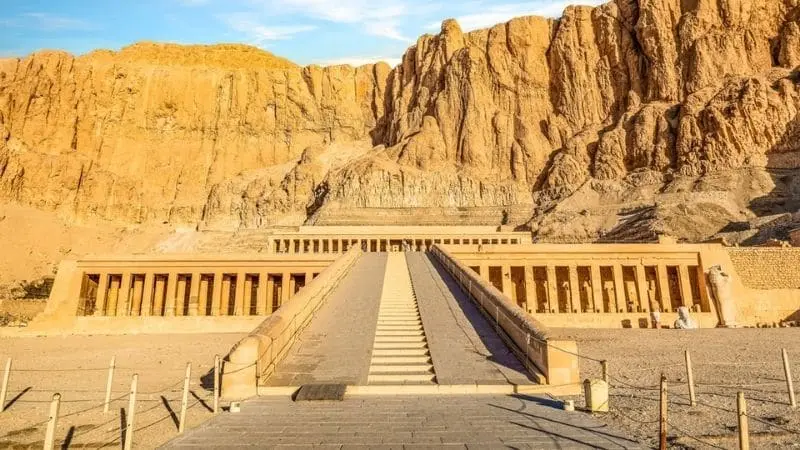The Morgue temple of Hatshepsut is located on the west bank of the Nile Waterway close to Luxor and included in our Egypt tours in the Valley of the Kings. The temple of Hatshepsut was worked during the fifteenth century BCE, during the rule of Sovereign Hatshepsut, one of a handful of the female pharaohs of old Egypt. Senenmut was the architect in charge of the Egypt travel package.
The temple was Hatshepsut’s final resting place as well as a memorial to her. It was dedicated to the sun god Amun. It was essential for the funerary complex that additionally remembered her burial place for the Valley of the Kings.
Hatshepsut’s temple is known for its one of a kind building plan that you will explore in Egypt day tours. It has three terraced levels connected by ramps and is situated against the cliffs of Deir el-Bahari. The three levels are described by lengthy corridors and porches. The temple’s plan coordinates normal components of the scene, making an amicable mix with the environmental factors that you can explore in Egypt luxury tours.
The temple highlights colonnaded lobbies with lines of Osiride sculptures (sculptures with the pharaoh’s arms crossed, holding the imperial badge). The segments are embellished with portrayals of the pharaoh’s heavenly birth and other strict scenes. All through the temple, there are churches to visit in Egypt Classic tours and safe-havens committed to different divine beings, including Anubis, Hathor, and Amun. A remarkable element that you will explore in Luxor day tours is the series of sphinx-like sculptures at the entry, portraying Hatshepsut with the body of a lion. These sculptures have since been harmed or obliterated, reasonably because of later political activities. What do you think about taking the Luxor East Bank tour after finishing your journey in Hatshepsut temple?
Hatshepsut’s Temple complex likewise incorporates the Red Church that you can enjoy in Egypt budget tours, a little sanctum or house of prayer worked to pay tribute to the god Amun. It was initially situated close to the primary temple yet has been reproduced in the Karnak Outside Historical center.
Thutmose III, Hatshepsut’s heir, attempted to obliterate her legacy after her death. A large number of her sculptures and reliefs were destroyed or taken out. In spite of these activities, the sanctuary stays an exceptional demonstration of her rule. All this historical info will be relevant in Egypt easter tours.

The statues of Hatshepsut at her temple are iconic representations of the queen-pharaoh that you can discover in Egypt Christmas tours. Some notable aspects of these statues include:
Hatshepsut’s temple remains as a momentous demonstration of her rule, including great engineering, imaginative reliefs, and sculptures that give bits of knowledge into the political and strict environment of old Egypt during her reign.